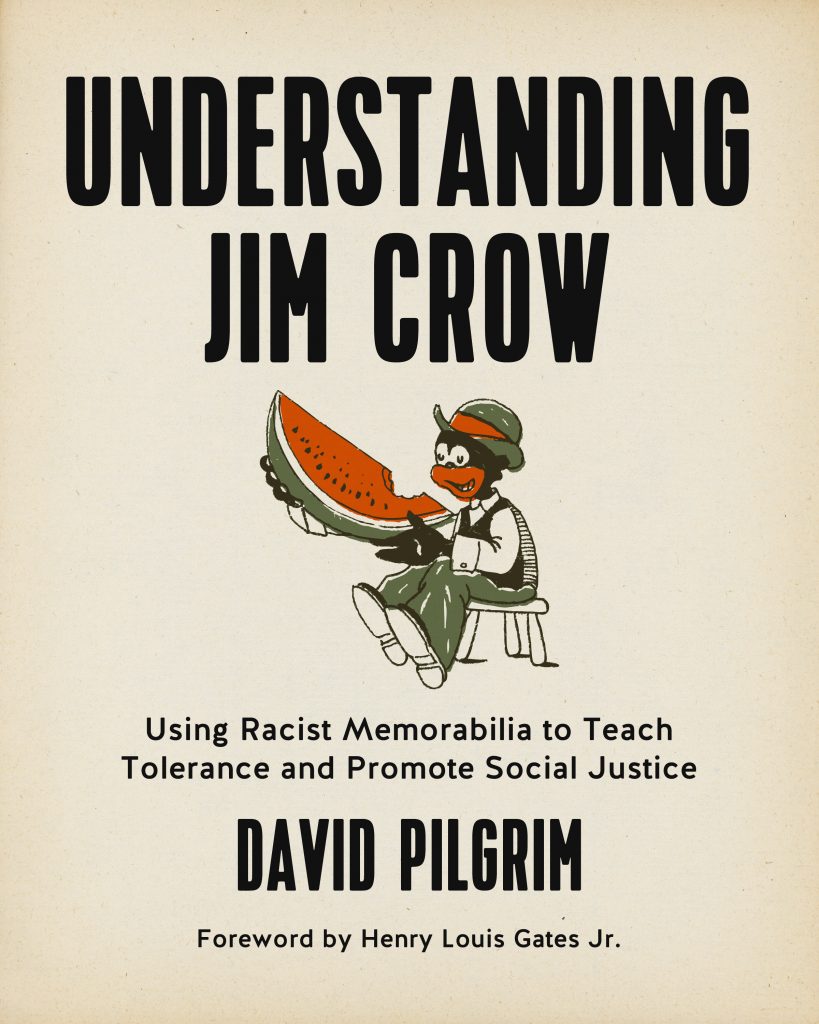By Konnie LeMay
Indian Country Today
10/8/16
Dr. David Pilgrim is the founder and curator of the Jim Crow Museum on the Ferris State University campus in Big Rapids, Michigan. Pilgrim, who has collected racially-charged items most of his adult life, believes cartoon and stereotypical images of Aunt Jemima, Jim Crow, Chief Wahoo and the Redskins all rob the dignity and identity of the races portrayed.
Though Pilgrim uses the items as teaching tools, he admits his disgust for the objects and a relief in moving them to the museum in 2012. “I hated my collection most of my life. I hated having it in my home and I was glad to get it out of my home.”
However, he added, the desire to sweep away or ignore these images – past and present – leaves unhealed wounds.
The Jim Crow Museum has nearly 12,000 objects depicting racial imagery, with 5,000 pieces on display at any time.

On display on the museum is a Ku Klux Klan knife – with a Cherokee head logo.
Though the museum primarily emphasizes the stereotypes of African Americans, Pilgrim, along with the university’s gallery director, Carrie Weis, also created two traveling exhibits, including one titled “Them: Images of Separation” with 35 examples of stereotyping of African, Native, Jewish, Mexican and Asian Americans as well as the stereotype of ‘Poor Whites.’
In developing the museum Pilgrim said, “the biggest roadblocks were Whites and African Americans, who just wanted these stories to be dead and forgotten, people who wanted to see this history die. The truth is racism has not died … these objects are still being made.”
Pilgrim explained that having a collection of racially-charged items is a not an endorsement of their message. “We are not a shrine to racism. It’s a place where we try to provoke intelligent conversation. I know Americans like happy history, but there was another history.”

Dr. David Pilgrim: ”I know Americans like happy history, but there was another history.” Photo: Courtesy
In the case of Native imagery, Pilgrim finds two main lines of stereotyping. “The drunk savage, the buck or the jezebel hyper-sexual young female, or the romanticized, idealized way – the strong brave, the beautiful woman, the warriors fighting against the government.

A Native comic book is part of the Jim Crow Museum’s collection. Photo: Courtesy
“In sports,” he says “there’s probably the greatest abuse of the Indigenous people. You wouldn’t get away with it in that way with another group.”
Pilgrim credits Vernon Bellecourt, White Earth Band of Ojibwe, a leader in the American Indian Movement, with first turning his attention to sports. “He was one of the early people who sort of introduced me to the anti-mascot campaign.
“The so-called Washington Redskins. I don’t see how you can’t see that as at least a racial slur, if not a racist slur. You would be surprised at how many people think there is nothing wrong with that.
“To live in a society where every major societal institution taught you that you were inferior in every way imaginable, big and small. There’s no way that they don’t internalize that,” Pilgrim said. ““It stains you in some way.”
Dr. David Pilgrim, an applied sociologist, is author of Understanding Jim Crow: Using Racist Memorabilia to Teach Tolerance and Promote Social Justice and will release another book in 2017 that includes his essay, “Brothers,” his reading of which is on the Jim Crow Museum’s YouTube channel.







